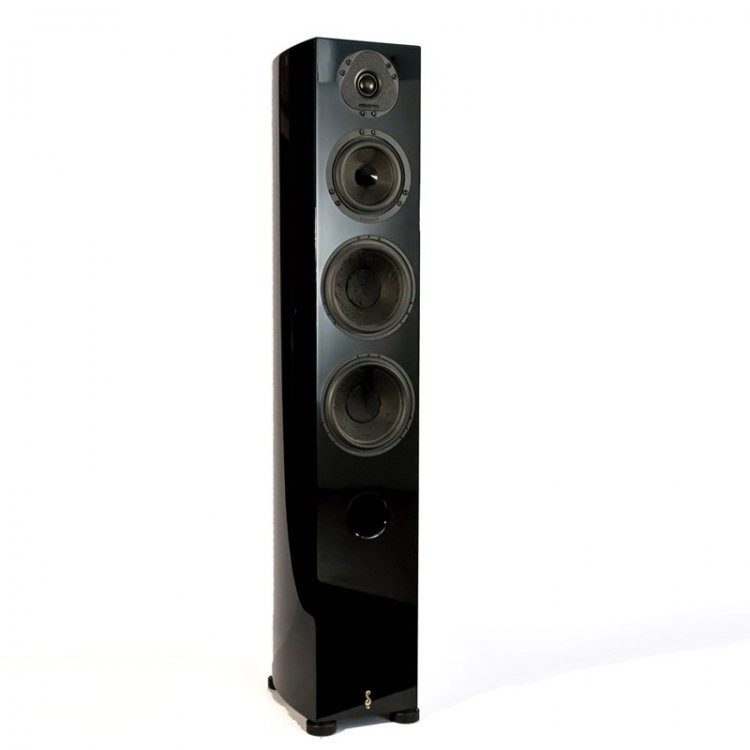
Review Stradivari Magnus
Stradivari, what a name for a loudspeaker company
Stradivari made some of the most stunning violins ever and they are in huge demand by top violinists. The best were made 400 years ago and the demand and rarity are so high that the price of them is in the millions. They look superb and were made with specially treated wood and a really thick varnish to sound absolutely unique.
Sonus Faber also had a top of the range speaker called the Stradivarius which looked and sounded superb. I have always wanted a pair and got within 30 mins of owning a used pair but was beaten to the punch. So, a loudspeaker company called Stradivari raises my expectations and biases.
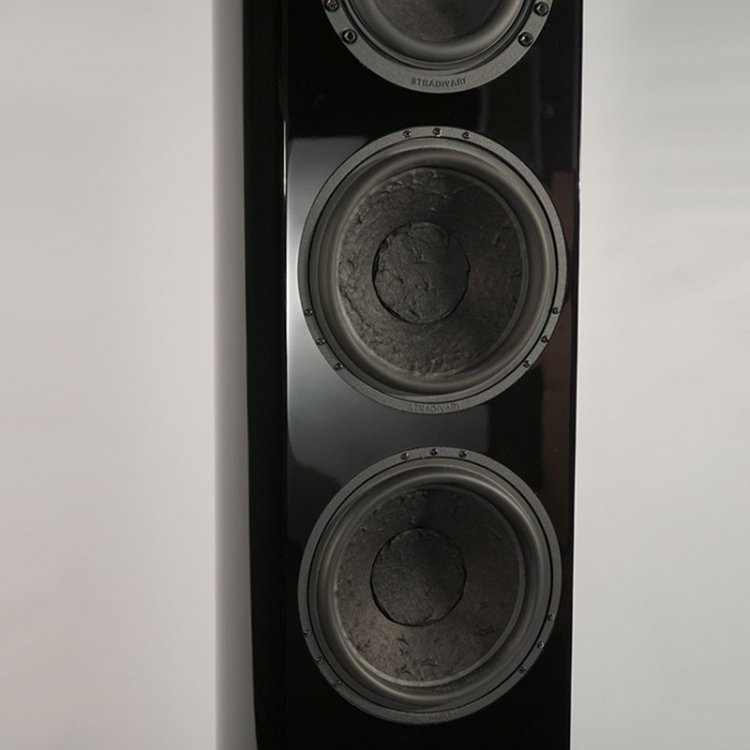
Stradivari loudspeakers are made in Holland under the expert eye of Frits Straatsma. He has been involved in audio for nearly 30 years and has developed many loudspeakers with his current range being the Amorat, the Pantera and the Magnus, which is here for review. The Magnus is a three-and-a-half-way speaker with two 6.5“ bass units, a 5” mid-range unit with a phase plug and a 25mm tweeter. And the really unusual thing is that Stradivari makes their own drive units. Yes, these are not bought in units from someone like Scanspeak but they are individually designed and built on the Stradivari premises for this specific purpose. These speakers are put into a superb looking piano black, boat-shaped loudspeaker that has the look of a real musical instrument. Of course, they do tend to be a fingerprint attractor much like a real piano. For an additional £1,000, you can have a high gloss wood finish.
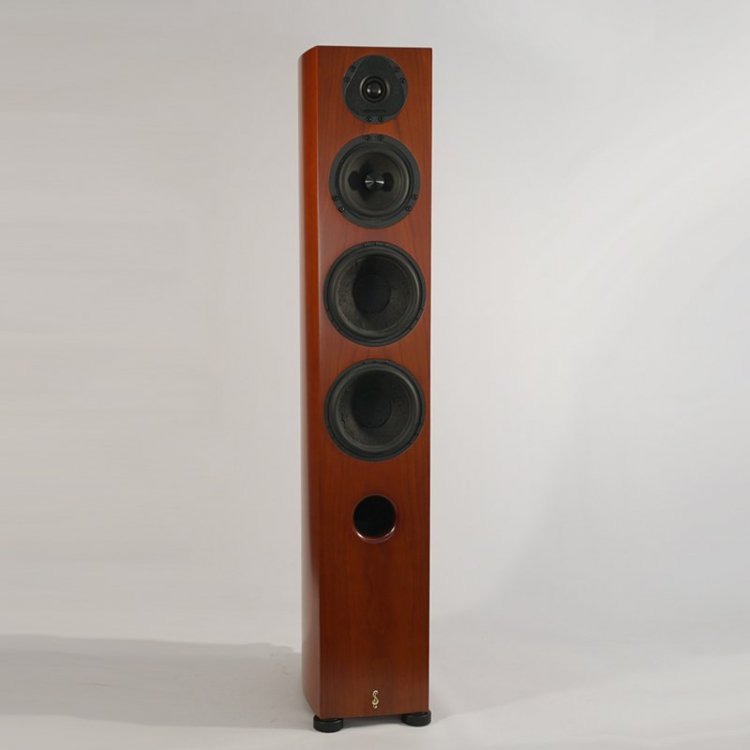
The speaker cones are made of paper with natural materials added to help absorption and damping. Frits does not like hard materials used in some speakers as they have very little internal absorption and he says they have a tendency to sound cold and lifeless. He also does not like aluminium, carbon fibre and fibreglass cone materials as they can sound cold, hard and sharp with ceramic materials and Kevlar getting the thumbs down as well, as he believes they sound lifeless, flat and shrill. We will see.
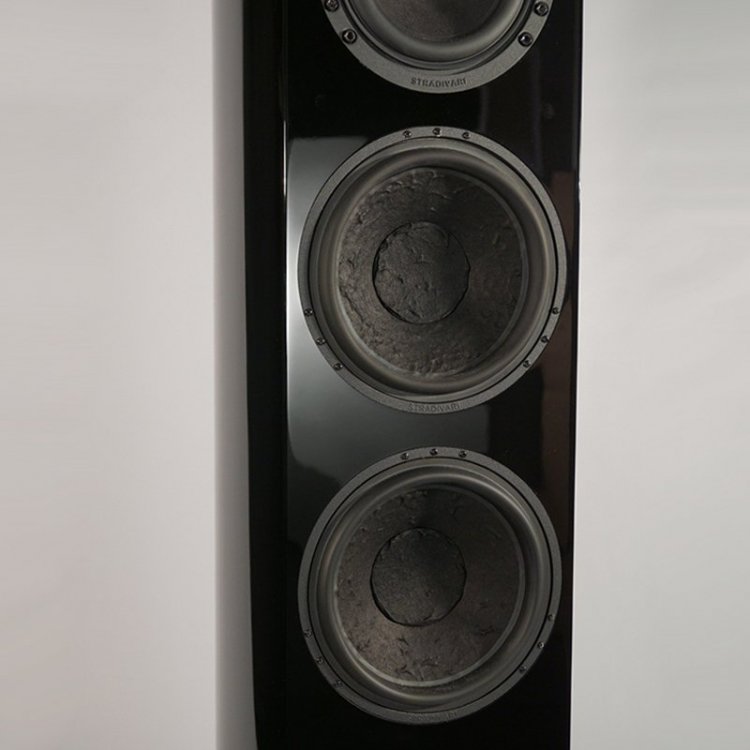
The Stradivari Magnus uses second order crossovers between the individual speaker units. The bass speakers use a long throw coil with a symmetrical magnetic field to help keep distortion low in the deep bass. The speakers are 90 dB efficient and as they do not have very low impedances or bad phase angles they do not need huge currents, so amplifiers that can double up are arc welders are not needed. The speaker units do not have dust caps in an effort to minimise compression. The 25mm tweeter has a surround made of real leather which is a nice detail to get better audio and looks.
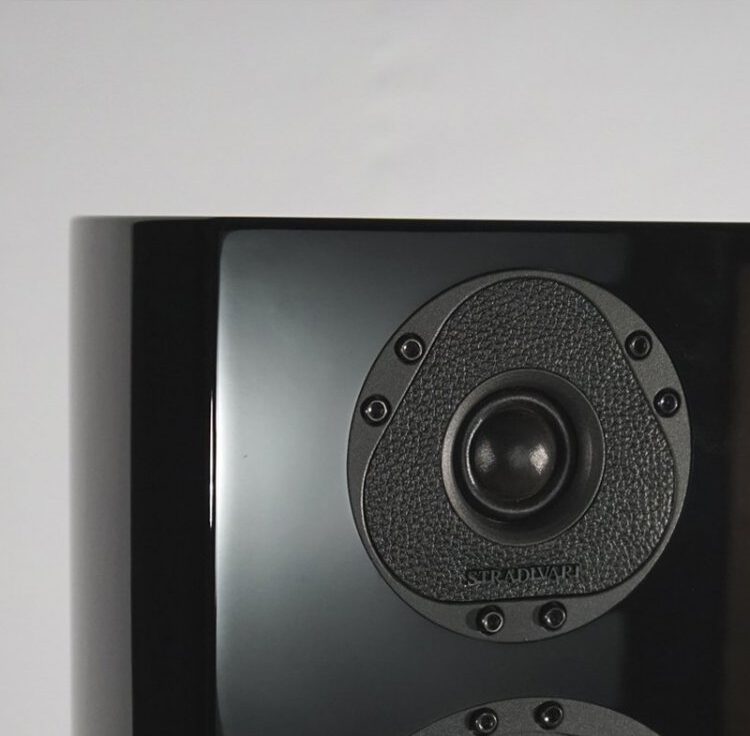
The specifications show a bass response of 22 Hz in the bass and for the top end 40 kHz, both at -6db. That bass is impressive from two 6.5” bass units even from a reflex ported speaker. I measured the speaker response in my room and got results that show the bass figure is about right.
For the real geeks amongst us, there are many more design details on the Stradivari web page at: https://www.stradivariaudio.com/
I was determined to get the best out of these speakers so selected the best-suited amplifier from my collection of Pass Labs A30.8, Allnic Integrated with 100w/ch using KT150s and a Unison Research S6 with its EL34’s in triode mode. For speaker cables, I tried my Cut Loose silver ribbon bi-wired cables, Chord Signature XLs (in for review) and a pair of Transparent Audio Supers MM2s. I ended up using the Audionote CD4T, Audionote DAC4.1, Pass Labs XP12 and XA30.8 with TA Super MM2s.
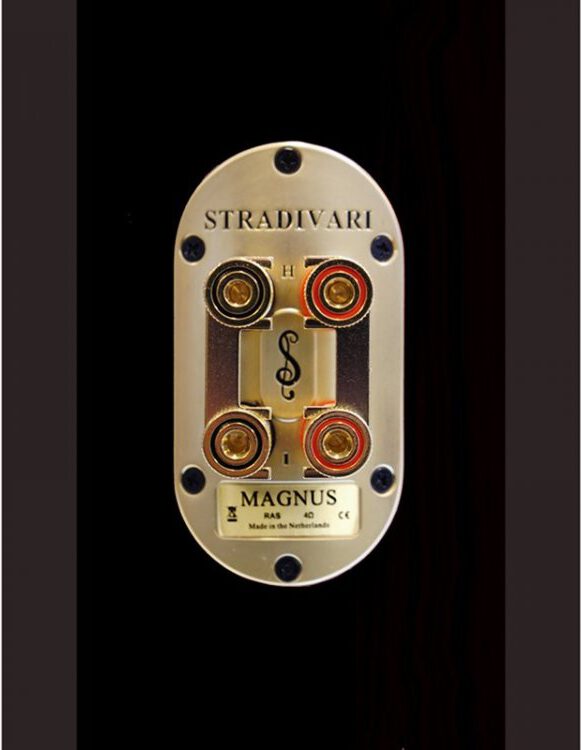
How easily can our expectations be dashed?
I am expecting from the name and my interest in the Sonus Faber Stradivari to hear a big warm cuddly sound. Nope. These are modern sounding speakers. They are clear, transparent and have a fast bass. And no they do not have that over the top modern monitor sound which is impressive with ultra-detail but gets wearing in time. In that respect, these speakers are really musical. They reproduce a huge amount of detail but without a wearing sound. So, listening to them for a long session is no problem. There were many occasions where I heard additional details but always as an integrated part of the music and voices were really clear. It was easy to hear song lyrics.
So, I went through my ‘test list’ which I have recently modified from what I previously used. I now use tunes I like rather than audiophile music which can be brilliantly recorded but sounds dull, dull, dull.
So, starting with Elsaine’s Vaporous from her Hybrid album: This is a modern electronic track with a lot of processing on her voice. The words she sings were easy to understand, the drums and bass were easy to follow with all of it bathed in a huge amount of reverb. Despite hearing all these elements, the music was not taken apart and remained an integrated whole.
Ember’s WhoMadewho from the Ember EP is also an electronic track but with a more powerful bass. Again, this was an easy to follow track with a much more powerful and tighter bass than the Elsaine track that really showed off what these speakers could do with the low bass. I really enjoyed this track and it made a lot of musical sense.
OK, for something completely different I played 2 Cellos and the Game of Thrones melody. This is a very close-miked recording with great cello string tone. The speakers played the slow build up to the powerful and easily remembered main tune had great power without the need for excessively loud volume levels. This musical drama builds you up for the film-like show that follows. Drama from fast and powerful music rather than just playing it loud. These speakers work well at low volumes.
OK, ok I did use Tarova from Snarky Puppy’s Culcha Vulcha which some regard as audiophile jazz. But SP plays with great enthusiasm and have some interesting timings on the track. Everything was clear, dynamic and the bass fast and very well timed. It was easy to hear how changes to timings affected the impact of the track. These guys sounded as though they were really enjoying their music making and there was no inhibition in their playing. The speakers played that really well.
Of course, I had to play something from Percy Plant and the boys’ first album. This was when Led Zep had a lot of real fire in their music and there was no holding back with their songs. Yes, it was not the most refined recording but boy is the playing dramatic and Rob Plant really lets rip with his singing. This was ideal for the Magnus fast, dramatic and powerful. The speakers let you hear that the recording was not brilliant but that did not stop the enjoyment of the music.
I obviously played some more sedate female singing and the Magnus played them with great detail and delicacy. Their voices were very clear but there may have been a tad less humanness in Kasey Chambers’s Hell of a Way to go, Rhiannon Giddings’s Birmingham Sunday and Eilen Jewell live tracks, although Eilen’s live track Dusty Boxcar Wall (Live) really went along at a great pace and sounded very alive. I suspect a slightly different cable is all that is needed.
I really liked how the speakers played the live version of Pink Floyd’s Careful with that Axe Eugene with Roger Waters’ screaming coming over really well even when the mike overloaded. That was good and scary.
I finished with Hans Zimmer’s Why so Serious? and Fanfare for the Common Man by Aaron Copland. The Magnus reproduces classical music really well with the right amount of rasp to brass instruments and edge to string tone. The whole 3D effect (one real and one not) was easily heard with great layering. Good to hear it in the electronica and classical music. Not that Hans Zimmer is classical music of course but it made me jump in my seat.
I finally topped that lot out with Bonnie Raitt’s I Can’t Make You Love Me which was really, really lovely and allowed me to get really immersed in that track.
And then after these new test tracks were played I spent a good few hours with whatever music attracted my attention via Tidal. This few hours of music helped to reinforce what I had already heard but over a much wider range of music. I have to admit I went out of reviewer mode into audiophile mode. Always a good sign. And so it continued for the rest of my time with these speakers.
So, any problems? Well, a couple of thoughts. The speakers sit on large round feet and they wobbled on the carpet. I assume that houses in Holland have solid wooden floors and these flat feet sit on them without any movement. But in carpeted rooms, they wobble. I tried to stop them wobbling and it tightened up the focus of the soundstage so I would recommend Stradivari either offer spikes or fit outrigger feet. They would not be that hard for a toddler or a dog to knock over.
These speakers cost £7,127 with an extra £1K for the wood versions. There are some really good speakers in the £7K -£10K price range, so they are entering a competitive field. These speakers deserve to be in the top group of these speakers but there are some good ones.
If you are looking for a modern sounding speaker with great attention paid to the details of how the speakers are built, that use their own very high-quality drivers and will not look out of place in most modern homes then you really must get to hear these speakers. And the even better news is they are being brought into the UK through Guildford Audio and I am sure Trevor and Gavin will ensure that you hear these speakers at their best. They sound very good, look good and will give the lucky buyers a great set of speakers.
UK seller: www.guildfordaudio.co.uk
Review: https://www.hifiwigwam.com/forum/topic/130396-stradivari-magnus-speakers/
MAGNUS Speaker specifications
RMS power: 180 Watt continuous
Impedance: 4 – 8 Ohm
Sensitivity: 92 dB
Frequency range 22 Hz – 40 kHz.
Bass 2 x 136 cm2
Mid 1x 74 cm2
Tweeter 8 cm2
Crossover frequencies
Low: 22 Hz – 200 Hz
Mid: 300 Hz – 3.5 kHz
High: 3.5 kHz – 40 kHz
Dimensions
Height: 109 cm
Width: 19.5 cm
Depth: 35 cm
Weight: 25 kg
